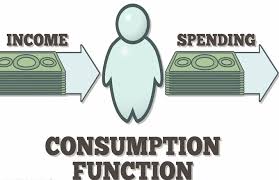- Disposable Income (DI)
- Income after taxes or net income
- DI = Gross Income - Taxes
2 Choices
- With disposable income, households can either:
- Consume (spend money on goods & services)
- Save (not spend money on goods & services)
Consumption
- Household spending
- The amount to consume is constrained by:
- The amount of disposable income
- The propensity to save
- Do households consume if DI = 0
- Autonomous consumption
- Dissaving
- APC = C / DI = % DI that is spent
Saving
- Household NOT spending
- The ability to save is constrained by:
- The amount of disposable income
- The propensity to consume
- Do households save if DI = 0
- NO
- APS = S / DI = % DI that is not spent
APC & APS
- · APC + APS = 1
- · 1 – APS = APS
- · 1 – APS = APC
- · APC > 1 .: Dissaving
- · - APS.: Dissaving
- · Marginal Propensity to Consume
- ∆C / ∆DI
- % of
every extra dollar earned that is spent
- · Marginal Propensity to Save
- ∆S / ∆DI
- % of
every extra dollar earned that is saved
- · MPC + MPS = 1
- · 1 – MPC = MPS
- · 1 – MPS = MPC
Determinants of C
& S
- Wealth
- Expectation
- Household Debt
- Taxes



No comments:
Post a Comment